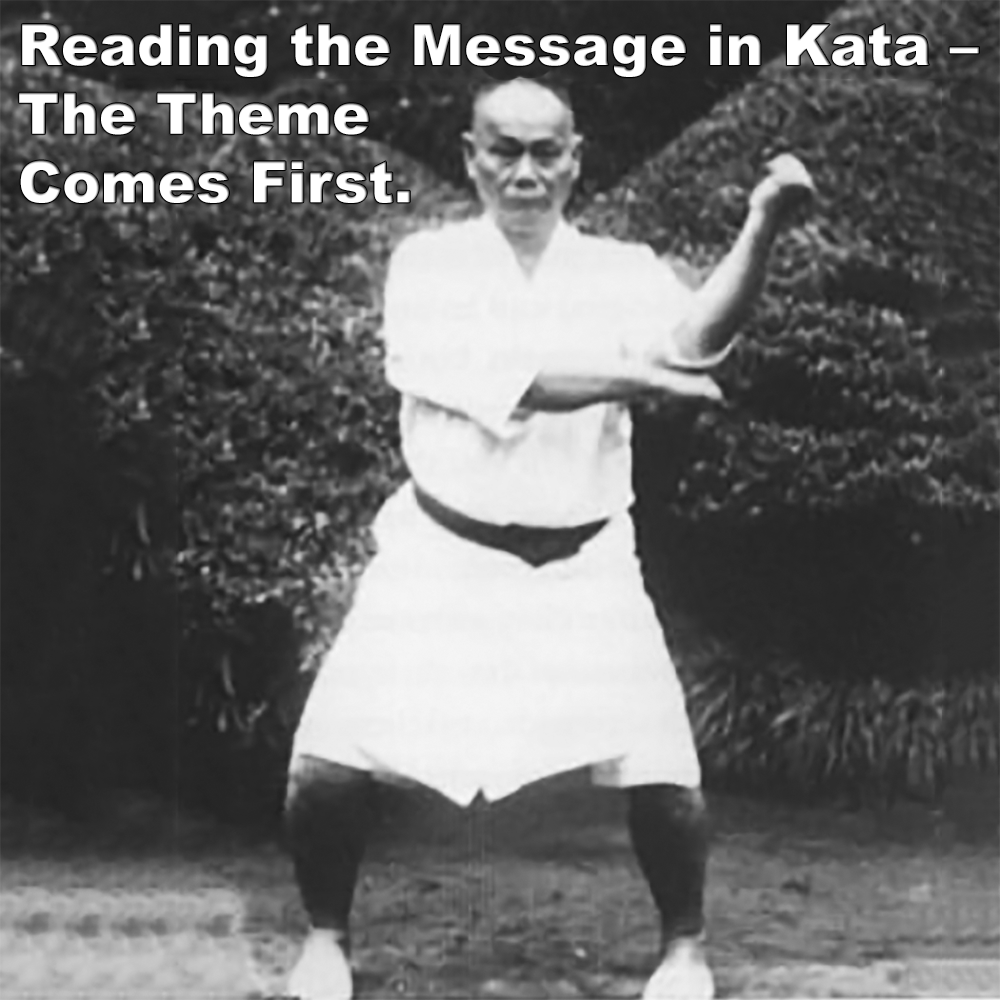
(Approx 2 minute 25 second read)
Kata are not just sequences of techniques, they are repositories of information, each built around a central theme.
.
One kata might deal with preventing grabs, breaking grips, countering when that fails, and then controlling or escaping, all from the same starting point. By studying kata this way, we begin to see the lessons behind the movements, rather than focusing on individual techniques.
.
Most often, people pick a single movement from kata and then build a scenario to show its application. That may be useful when demonstrating, but it’s not the complete picture. It’s kind of backwards, like finding just one jigsaw puzzle piece and then trying to imagine the whole picture from it.
.
Take a common example: in many kata you see a hand movement that looks like a punch. Most people may assume it’s meant to hit the midsection of the body. But in reality, that same motion could represent a grab, breaking from a grab, deflecting an attack, or creating space, and more.
.
But by starting with the move, we let it decide the response – punching. That response then seems to set the plan, which is striking, and suddenly the whole kata looks like it’s only about striking (and blocking).
.
So by doing this, we confuse the message of the kata.
.
And it gets worse, because once we decide the move is a punch, we apply that same answer every time the movement appears, even in completely different kata.
.
For me, the ‘lesson’ kata gives us starts with the plan, the plan shapes the response, and only then do we look at the move itself.
.
So, if we want to understand an application, we start with the overall lesson of the kata. From there we look at the plans it suggests, then the responses that flow from those plans, and only then do we study how the movement applies.
.
You might still think, “I don’t see it, that movement looks like a punch, not a grab”. That’s normal, it’s the way most people have been trained. However, I believe that kata often condense ideas, and inadvertently disguises actions, rather than showing them literally.
.
But how do we know the theme of the kata if we don’t start with the techniques?
.
The answer is to step back and look at the kata as a whole. Notice the repeated movements, the types of attacks or defenses it emphasizes, and the flow from one section to another. The theme emerges from the overall structure, not from any single move. Once the theme is clear, the plans, responses, and movements fall into place naturally.
.
The masters themselves never wrote about “themes” in kata in the way I’ve described here. But their words suggest that kata were designed as complete lessons, not just strings of unrelated moves.
.
Of course, we can’t ever be completely certain what the person who created the kata intended. What we can do is interpret it logically. Test the applications safely and see what makes sense in practice. By combining careful observation and practical reasoning, the theme of the kata usually becomes clear, even if we can’t know every detail for sure.
.
The purpose is to train understanding of intent and strategy. If we focus on the intent behind the movements, the theme begins to make sense.
.
If we work this way, the message of the kata becomes clearer. But if we start with a single movement and build upwards from it, we could end up missing the lesson entirely.
.
.
Written by Adam Carter – Shuri Dojo
